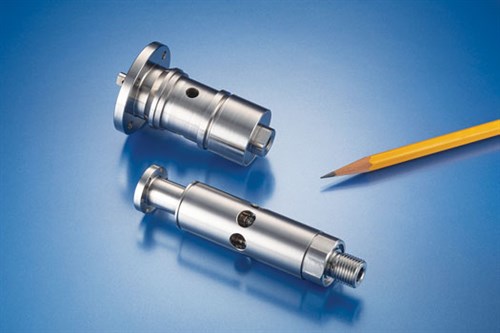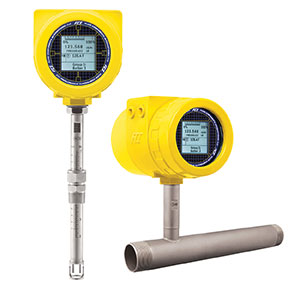New in Gas Processing Technology
Technip Energies, Svante to develop CO2 capture projects in Europe and the Middle East
 |
Technip Energies and Svante have entered an MOU to further develop Svante’s solid sorbent carbon capture technology and provide integrated solutions from concept to project delivery.
The partnership will explore opportunities in Europe, the Middle East and Africa and Russian Federation markets where Svante’s technology would be selected by end users for industrial carbon capture projects, including cement & limestone, blue hydrogen, refineries, petrochemicals, steel, ammonia and pulp & paper facilities. The cooperation will be worldwide for blue hydrogen plants using Technip Energies’ steam methane reformer technology.
The carbon-capture facilities will use Svante’s solid sorbent technology to capture carbon directly from industrial post-combustion flue gases as a non-intrusive ‘’end-of-the-pipe’’ solution to produce pipeline-grade CO2. Svante’s net-zero technology captures CO2, concentrates it, and releases it for safe storage or industrial use, all in less than 60 sec, by using proprietary active capture nanomaterials called solid sorbent filter.
Chesterton Connect equipment monitoring sensor for use in hazardous environments
Chesterton has released the equipment monitoring sensor, Chesterton Connect for use in hazardous conditions. This is part of Chesterton’s IoT wireless monitoring product line, which is certified for use on equipment and structures that are in environments with high pressures, high temperatures
and flammable liquids.
The Chesterton Connect is rated for Class 1/Division 1 (gas, vapor environments) and Class 2/Division 1 (dust environments). The sensor contains electrical protection that prevents it from becoming a source of ignition.
The Connect sensor is capable of monitoring rotating equipment such as pumps and heat exchangers for equipment vibration, equipment surface temperature, process pressure and process temperature. The sensor communicates through Bluetooth and sends alerts to the user’s app.
Drager released methane detection cameras
The MetCam optical gas detection camera, by Drager, automatically identifies methane leaks. This technology can prevent potentially hazardous gases from damaging the environment and disrupting the safety of the plant.
The camera displays a black and white video image—the gas gas is colored so that it can be easily detected—the camera quantifies the concentration of the escaping gas. In addition, this technology automatically recognizes when the optics are obscured or dirty to prevent false alarms. The MetCam self-calibrates on a set schedule and adapts to changing weather conditions.
Sundyne’s HMD Kontro launched complete fluid containment solution
HMD Kontro’s latest magnetic drive seal-less pump solution offers safe transfer of hydrofluoric acid during the alkylation processes. The technology was developed in collaboration with hydrofluoric acid unit operators and Honeywell UOP. The HMD Kontro hydrofluoric acid pump is corrosion resistant, contains leak detection, protection against dry pump running and is safer for people and the environment.
Mechanical seals are challenged in alkylate applications and can leak harmful process fluids. Designed for resistance against highly corrosive fluids, the HMD Kontro application-specific, seal-less pump ensures conformity with all environmental health and safety standards, protecting people, plant and the environment through complete fluid containment.
The Lee Company has introduced new pumps for high-pressure, high-temperature applications
 |
The Lee Company released a new positive displacement axial piston pump, which offers increased performance in high-pressure, high-temperature applications. The HPHT pumps family can generate up to 10,000 psid at temperatures of 400°F. This is ideal for critical hydraulic fluids transfer applications. The axial piston design does not contain any elastomers, which increases resistance and improves reliability.
HTHP pumps are designed to be driven by a Maxon Motor and are qualified for more than 1,000 hr of operation while withstanding high shock and vibration levels. The pumps are available in 22-mm and 30-mm diameter options. Cylindrical Hi-Bar inlet screens that slide onto the body of the pump are also available.
MOL, Vopak to build Hong Kong’s first LNG import terminal
Mitsui O.S.K. Lines Ltd. (MOL) and Vopak announced an agreement has been reached, whereby Vopak will acquire 49.99% of the shares in the vessel owning company of MOL FSRU Challenger, whose name will be changed to Bauhinia Spirit. This new JV company between MOL and Vopak in Hong Kong will own the world’s largest floating storage and regasification unit (FSRU) and have a long-term contract with Hong Kong LNG Terminal Ltd. The FSRU has a storage and regasification capacity of 263,000 m3 and 800 MMsft3d, respectively. Under the contract, the JV will provide the FSRU as well as jetty operations and maintenance and port services.
The offshore jetty platform for the mooring of the FSRU and LNG carriers are owned by Hong Kong LNG Terminal Ltd.
The terminal is under construction and is expected to be operational around mid-2022. The terminal will be located offshore about 25 km southwest of Hong Kong Island and will provide natural gas feedstock to the customer’s dedicated power plants. It is being developed to support the Hong Kong Special Administrative Region government’s target to improve air quality and environmental conditions by increasing the percentage of power generation by natural gas.
TotalEnergies and Clean Energy launched the construction of their first biogas unit
TotalEnergies and its U.S. partner Clean Energy launched the construction of their first biomethane production unit, in Friona, Texas. Biomethane will be used as an alternative fuel for mobility, thus contributing to decarbonize road transportation.
Located on the Del Rio dairy farm, the facility will be fueled by the onsite supply of livestock manure to produce more than 40 GWh of biomethane per year. The biomethane will be distributed in the U.S. by Clean Energy through its network of fueling stations, enabling the supply of renewable gas to between 200 and 300 trucks per year.
By processing cow manure, a significant source of methane emissions, and substituting fossil fuels with renewable energies, the project will avoid some 45,000 tpy of CO2e emissions.
FCI launched technology to measure methane
 |
Fluid Components International (FCI) debuted the ST80 Series Thermal Mass Flow Meter to measure methane and provide accurate emissions data for companies to meet environmental regulations and reporting requirements.
The ST80 Series uses hybrid sensor drive adaptive sensor technology (AST). This measuring technique combines constant power and constant temperature thermal dispersion sensing technologies. The meters have also been approved internationally for use in Div.1/Zone 1 environments.
The ST80 offers a choice of four precision flow sensor element designs, one of which is the Wet Gas MASSter sensor developed for the ST80 Series. The Wet Gas MASSter optimizes the sensor head design and installation to prevent condensation droplets, entrained moisture or rain from contacting the thermowells.
The meters are suitable for pipe diameters from 1 in.–99 in. and air/gas temperatures up to 850°F. They feature an accuracy of ±1% of reading, ±0.5% of full scale and repeatability of ±0.5% of reading with flowrates ranging from 0.2 ft/sec–1,000 ft/sec (0.07 m/sec–305 m/sec) and 100:1 turndown.
ExxonMobil, Scepter Inc. to deploy satellite technology for real-time methane emissions detection
ExxonMobil and Scepter, Inc. have agreed to work together to deploy advanced satellite technology and proprietary data processing platforms to detect methane emissions at a global scale. The agreement has the potential to redefine methane detection and mitigation efforts and could contribute to broader satellite-based emissions reduction efforts across a dozen industries, including energy, agriculture, manufacturing and transportation.
In the first phase of the project, the companies will design and optimize the plan for satellite placement and coverage, initially focusing on capturing methane emissions data from ExxonMobil operations in the Permian Basin. Scepter will deploy satellites in 2023 and increase coverage to more than 24 satellites over 3 yr, forming a large constellation network capable of monitoring operations around the world.
Scepter’s satellite detection technology has shown the ability to accurately collect data on methane, while also identifying sources of CO2, nitrogen oxides, sulfur oxides and other greenhouse gases. When combined with ExxonMobil’s data from ground-based sensors and aerial surveys using advanced analytics, Scepter’s data platform allows the company to further establish information regarding its methane emissions performance.
Siemens secured order for largest LNG-to-power complex in Latin America
Siemens Energy has secured an order for the turnkey construction of the combined-cycle power plant UTE GNA II in the integrated LNG-to-Power project GNA II, located at Port of Açu in the Brazilian state of Rio de Janeiro. Construction of the power plant is already ongoing for the project company Gás Natural Açu (GNA).
Following the successful commissioning of GNA I in Summer 2021, GNA II will be the second turnkey combined-cycle power plant that Siemens Energy will build in the thermoelectric hub and will add further capacity of 1.7 gigawatts (GW). With a combined capacity of 3 GW, the two power plants will be able to provide enough electricity for the consumption of around 14 MM households. The second order comes with the first application of the highly efficient HL class gas turbine in Brazil. The combined-cycle plants powered by LNG will be the most efficient thermal power plants in Latin America. The total project cost is estimated at $1 B.
The Açu natural gas project includes the construction of two thermal power plants, as well as an LNG regasification terminal, based on a floating storage regasification unit (FSRU), plus substations and transmission lines to connect the plants to the National Interconnected System. The thermoelectric complex is part of the Açu Gás Hub, a project under development at the Açu Port Complex aimed to provide a logistical solution for the receipt, processing, conversion to electricity and transport of natural gas in the Campos and Santos basins, as well as for importing and storing LNG. GP




Comments